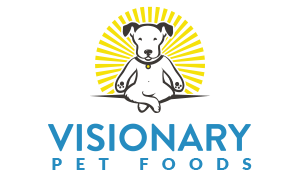
Introduction
As pet owners, we are always cautious about meeting the dietary needs of our furry friends. We do our best to provide good quality food with essential nutrients to ensure our pets' optimal health. One of these essential nutrients is copper. But what is copper? And are dogs and cats supposed to have it in their diet? In this blog post, we will explore the role of copper in your pet's diet, the daily recommendations, potential issues with excessive copper intake, and tips to avoid giving your pet too much copper.
What is Copper?
Copper is an essential trace mineral that is vital for the growth, development, and maintenance of the body. Found in all body tissues, copper plays a critical role in the production of red blood cells, metabolism of iron, the immune system, and maintaining healthy nerves, bones, and joints. It is clear that copper is an essential nutrient for all living organisms, including dogs and cats.
The requirement of copper in your pet's diet can vary depending on their age, breed, and activity level. But generally, the Association of American Feed Control Officials (AAFCO) recommends that dry dog food contains a minimum of 1.8 mg/1000kcal of copper and dry cat food at least 3.5 mg/1000kcal . It is essential to consult with your veterinarian to ensure the appropriate copper level in your pet's food.
Regarding Visionary Pet Foods, we deliberately keep copper content on the low side because an increasing number of dogs have problems with copper storage disease. Feedlot-fed beef is high in copper, which may contribute to the rise in copper storage disease.
Our copper levels meet AAFCO adult minimums, which is 1.8 mg/1000kcal. AAFCO doesn’t list a maximum. In Europe (FEDIAF), they list 7.3 mg/1000kcal as a maximum. It is our belief that anything over 6 mg/1000kcal is high.
Visionary Pet Foods Freeze, Dried Beef Formula, Contains:
1.8 mg per 1000 kcal (as formulated)
Visionary Pet Foods Freeze, Dried Chicken Formula, Contains:
2.2 mg per 1000 kcal (as formulated)
Visionary Pet Foods Dry Beef Formula Contains:
3.80 mg per 1000 kcal (as formulated)
Visionary Pet Foods Dry Chicken Formula Contains:
3.35 mg per 1000 kcal (as formulated)
There are several good sources of copper that you can incorporate into your pet's diet. Some natural copper-rich foods include beef liver, eggs, fish, shellfish, legumes, wheat bran, and nuts. Alternatively, many commercial pet foods are fortified with additional copper to ensure that your pet gets a balanced diet.

Can too much copper be dangerous?
It is crucial to be aware that too much copper can cause Copper Storage Disease or Copper Toxicosis. This occurs when excessive amounts of copper accumulate in the liver, leading to chronic liver disease and potential death. Some breeds, such as the Bedlington Terrier, Skye Terrier, and West Highland White Terrier, are more susceptible to this disease due to genetic predispositions. Symptoms of excessive copper exposure include vomiting, diarrhea, anemia, lethargy, and jaundice.

How do I avoid giving my pet too much copper?
To avoid giving your pet too much copper, follow these tips:
- Always choose high-quality pet food that adheres to the copper levels recommended by the Association of American Feed Control Officials (AAFCO)
- Consult with your veterinarian about your pet's copper requirement depending on their age, breed, and activity level
- Measure portions accurately and avoid overfeeding
- If feeding raw or home-cooked diets, calculate copper intake and adjust accordingly
- Bring your pet in for regular checkups to monitor their liver function and overall health
Conclusion
Copper is an essential nutrient for dogs and cats, but it is crucial to strike the right balance to ensure optimal health. Choose high-quality pet food, pay attention to your pet's copper requirement, and keep an open dialogue with your veterinarian to maintain the proper copper levels in your pet's diet. Copper levels in pet food should not be an issue if they are within the AAFCO recommendations. By being vigilant and informed, you can help your pet thrive and live a healthy, happy life.

Sources:
NRC. 2006. Nutrient Requirements of Dogs and Cats. National Academy Press, Washington, DC.
AAFCO. 2014. Official Publication. Association of American Feed Control Officials Inc., Champaign, IL.
Twedt, D. (2012). Copper-Associated Hepatitis in Dogs. Today's Veterinary Practice.



